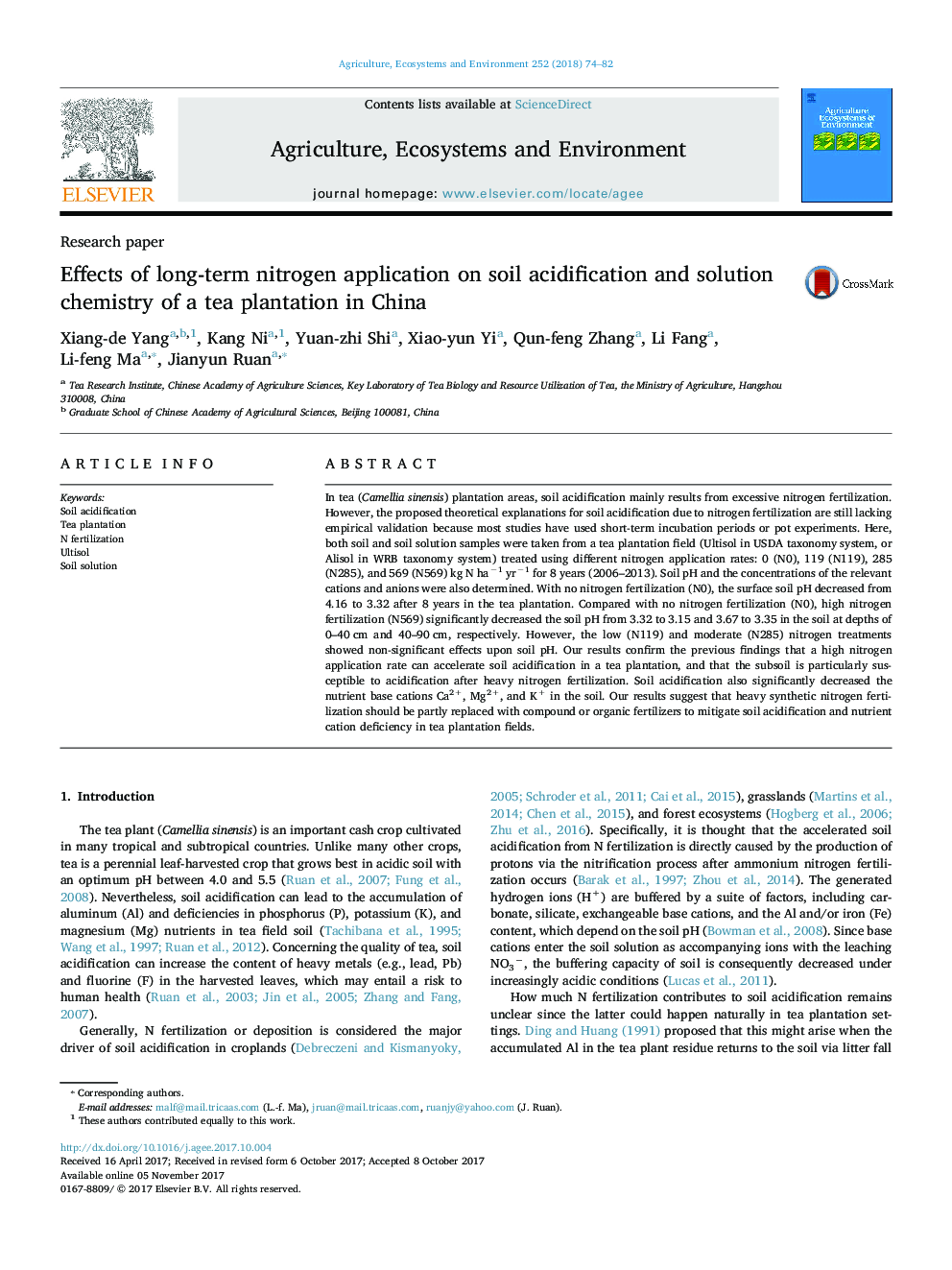| Article ID | Journal | Published Year | Pages | File Type |
|---|---|---|---|---|
| 8487250 | Agriculture, Ecosystems & Environment | 2018 | 9 Pages |
Abstract
In tea (Camellia sinensis) plantation areas, soil acidification mainly results from excessive nitrogen fertilization. However, the proposed theoretical explanations for soil acidification due to nitrogen fertilization are still lacking empirical validation because most studies have used short-term incubation periods or pot experiments. Here, both soil and soil solution samples were taken from a tea plantation field (Ultisol in USDA taxonomy system, or Alisol in WRB taxonomy system) treated using different nitrogen application rates: 0 (N0), 119 (N119), 285 (N285), and 569 (N569) kg N haâ1 yrâ1 for 8 years (2006-2013). Soil pH and the concentrations of the relevant cations and anions were also determined. With no nitrogen fertilization (N0), the surface soil pH decreased from 4.16 to 3.32 after 8 years in the tea plantation. Compared with no nitrogen fertilization (N0), high nitrogen fertilization (N569) significantly decreased the soil pH from 3.32 to 3.15 and 3.67 to 3.35 in the soil at depths of 0-40 cm and 40-90 cm, respectively. However, the low (N119) and moderate (N285) nitrogen treatments showed non-significant effects upon soil pH. Our results confirm the previous findings that a high nitrogen application rate can accelerate soil acidification in a tea plantation, and that the subsoil is particularly susceptible to acidification after heavy nitrogen fertilization. Soil acidification also significantly decreased the nutrient base cations Ca2+, Mg2+, and K+ in the soil. Our results suggest that heavy synthetic nitrogen fertilization should be partly replaced with compound or organic fertilizers to mitigate soil acidification and nutrient cation deficiency in tea plantation fields.
Related Topics
Life Sciences
Agricultural and Biological Sciences
Agronomy and Crop Science
Authors
Xiang-de Yang, Kang Ni, Yuan-zhi Shi, Xiao-yun Yi, Qun-feng Zhang, Li Fang, Li-feng Ma, Jianyun Ruan,
